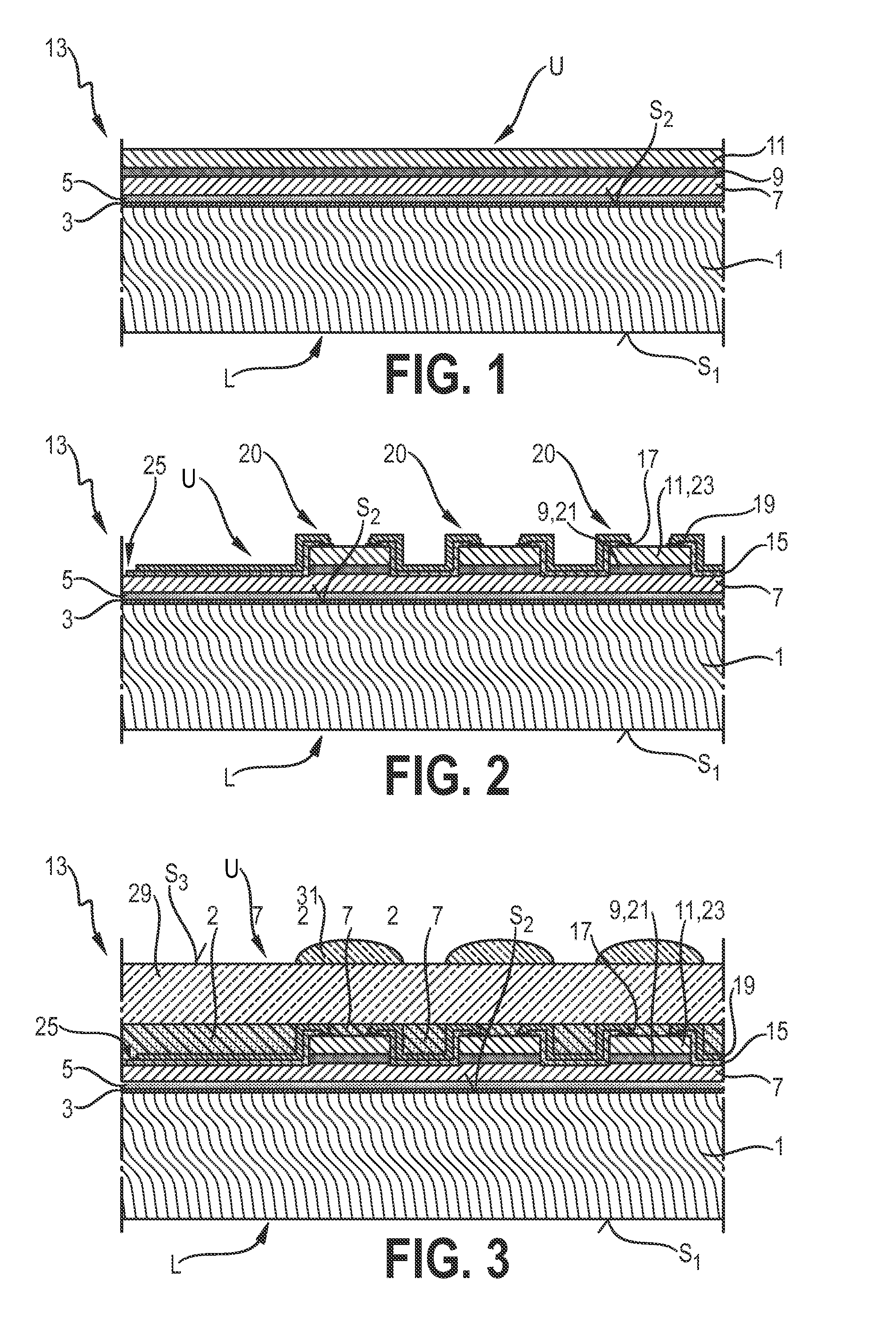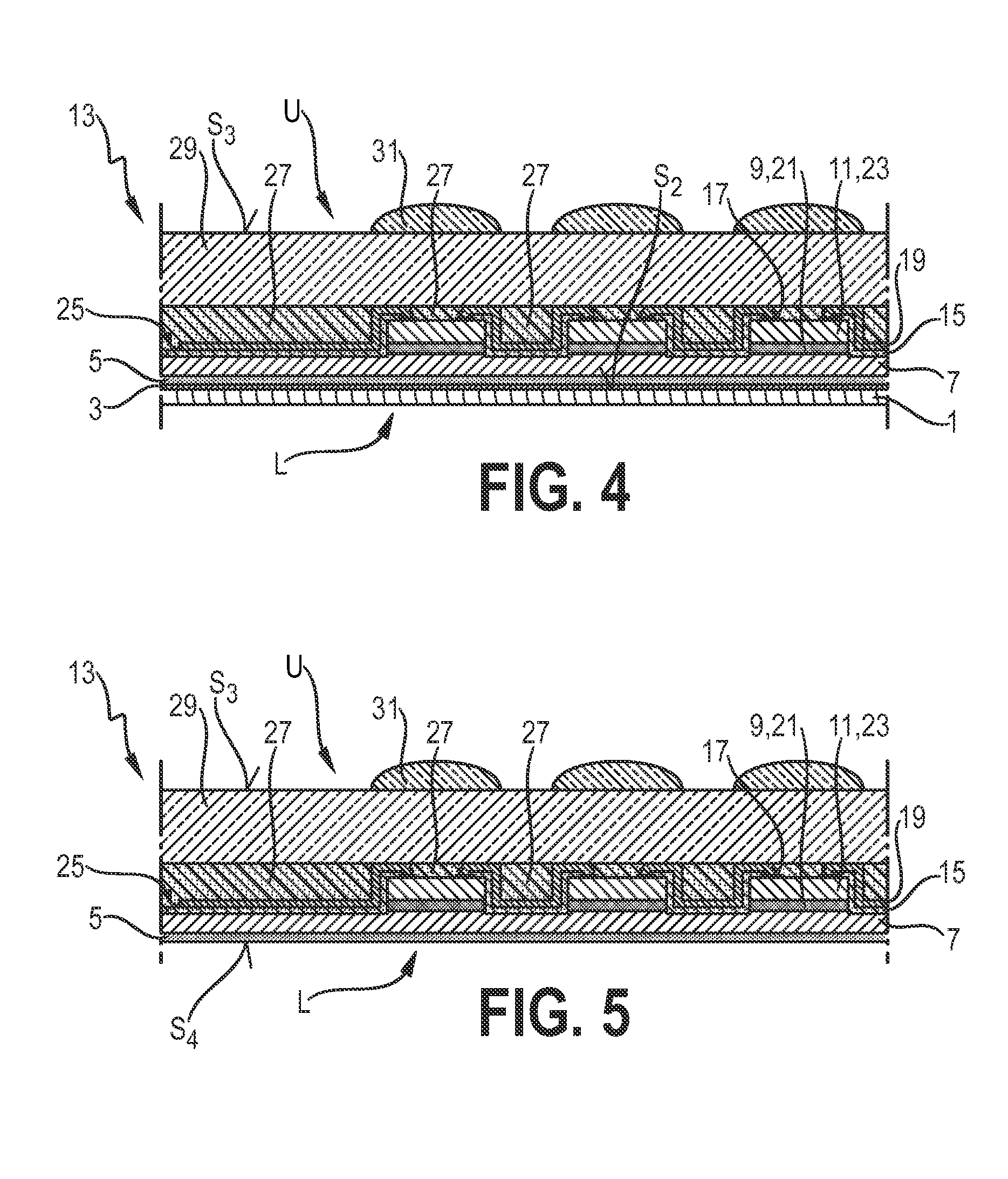VCSEL module and manufacture thereof
a technology of vcsel modules and modules, which is applied in the direction of semiconductor laser arrangements, semiconductor laser structure details, semiconductor lasers, etc., can solve the problems of inflexibility, increased production costs, and increased production costs of vcsel modules, so as to reduce outcoupling losses and facilitate connection
- Summary
- Abstract
- Description
- Claims
- Application Information
AI Technical Summary
Benefits of technology
Problems solved by technology
Method used
Image
Examples
Embodiment Construction
[0062]FIG. 1 shows a part of a semi-finished VCSEL product 13 for the production of a VCSEL chip, i.e. also for a VCSEL module, according to an embodiment of the invention.
[0063]The semi-finished VCSEL product 13 has an upper side U and a lower side L. It comprises in the given order from the lower side L to the upper side U: an intermediate substrate 1 with a first, lower, surface S1 and a second, upper, surface S2, an etch-stop layer 3 on the second surface S2, an electrically conductive buffer layer 5, a first doped layer plane 7, a light emitting layer plane 9 and a second doped layer plane 11. The first doped layer plane 7 and the second doped layer plane 11 will later function as mirrors to form the vertical cavity of the VCSEL chip. As they also need to serve as electrical contacts in this case they are made of layers with alternating refractive index, i.e. for instance GaAs or AlGaAs with thicknesses adapted to the emitted wavelength, for which purpose they are doped by Si a...
PUM
 Login to View More
Login to View More Abstract
Description
Claims
Application Information
 Login to View More
Login to View More - R&D
- Intellectual Property
- Life Sciences
- Materials
- Tech Scout
- Unparalleled Data Quality
- Higher Quality Content
- 60% Fewer Hallucinations
Browse by: Latest US Patents, China's latest patents, Technical Efficacy Thesaurus, Application Domain, Technology Topic, Popular Technical Reports.
© 2025 PatSnap. All rights reserved.Legal|Privacy policy|Modern Slavery Act Transparency Statement|Sitemap|About US| Contact US: help@patsnap.com



